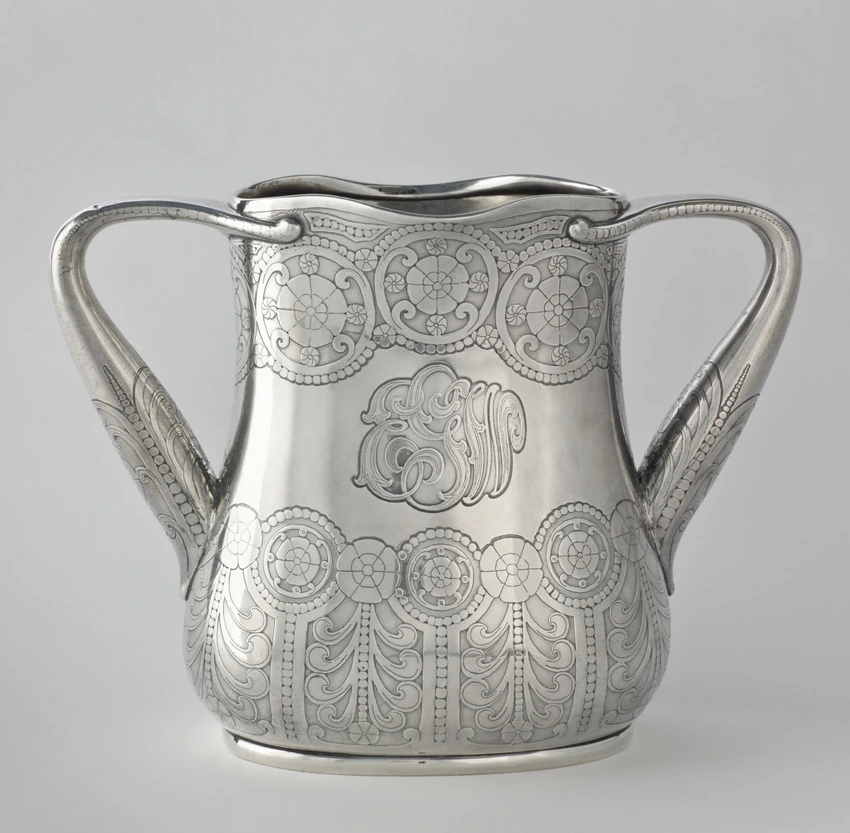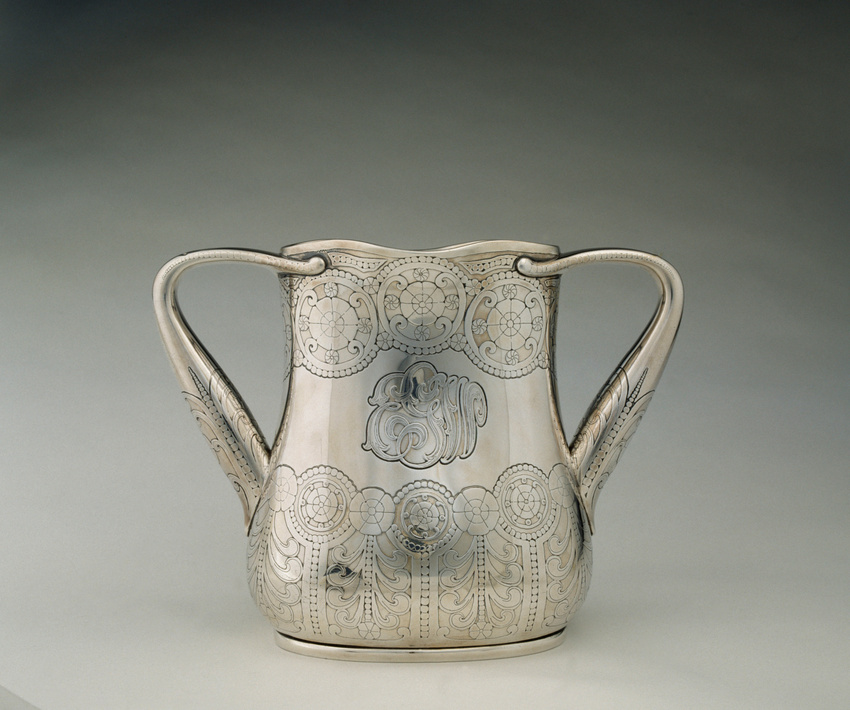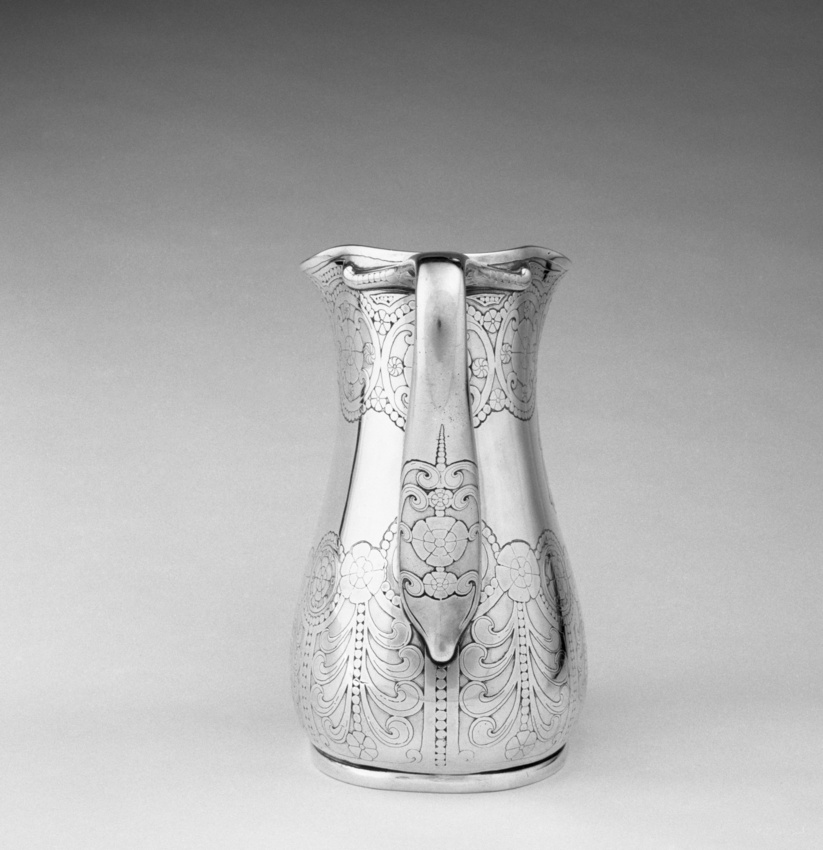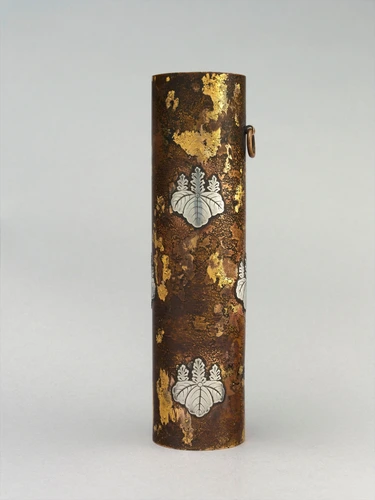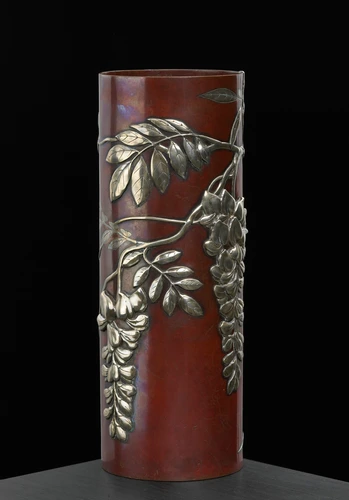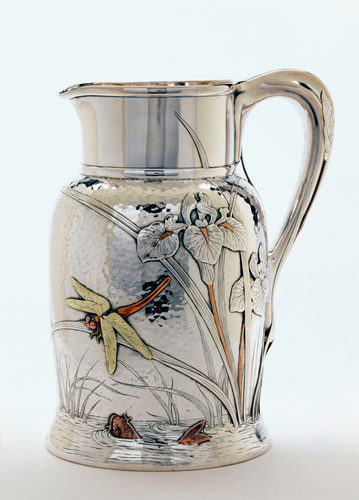Love Cup
The famous New York company, founded in 1837 by Charles Lewis Tiffany, only acquired a truly international reputation towards the end of the 1860s. Its regular participation in the Universal Exhibitions and the rewards gained from these are evidence of its success. In 1878, critics and art lovers became very enthusiastic about new pieces of silverware with floral and animal decorations, highly influenced by the Japanese style.
However, the Tiffany silverware did not limit itself to one single source of inspiration. The blending of Western tradition and Oriental sources was often more subtle; such is the case with this cup, designed in 1878. This model had a long-standing success, as shown by this example dated between 1902 and 1907.
In contrast to the illusionist Naturalism favoured by certain silversmiths, this highly stylised decoration respects the smooth surface of the metal, and tends towards more geometric floral motifs. This extreme stylisation of ornamental flora was a legacy of the teaching introduced in London by William Dyce, an artist at the Government School of Design, continued by Christopher Dresser and, at the same time, taught in Paris by Victor-Marie-Charles Ruprich-Robert at the Special School of Design, now the Ecole Nationale des Arts Décoratifs.
